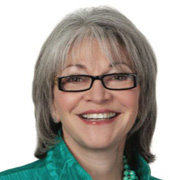by Marilyn Nagel
Chief Diversity Officer
Cisco
Attracting, retaining, and developing a diverse workforce is a top priority for Cisco, an organization that employs 72,600 people in more than 90 countries. At Cisco, we are focused on creating an inclusive culture that maximizes the contributions of our vast workforce, and helps ensure we have the creative, collaborative environment we need to support our globalization strategy.
Employee Resource Groups (ERGs) are one way that we engage our employees to help them achieve both individual and business goals. These groups bring employees from different backgrounds, cultures, and experiences together, often using Cisco communication and collaboration technologies, to develop their business understanding, skills, and networks. We encourage our ERGs to use their resources to find new ways to foster innovation, uncover market needs, and explore areas of potential growth.
ERGs have had a big impact across our organization. Many employees have told us their ERGs helped them develop leadership skills and gave them a way to make a difference outside their regular day-to-day jobs. From a business standpoint, we have seen these groups create meaningful dialogues that have led to business opportunities, where our unique understanding gives us a competitive advantage and increases profits.
“Many employees have told us their ERGs helped them develop leadership skills and gave them a way to make a difference outside their regular day-to-day jobs.”
We wanted to identify a way to help ensure that these benefits were repeatable. With different ERGs doing different things for different results, we needed to gain insight into their true effectiveness. We needed our ERGs to achieve accountability and consistency, but without sacrificing their unique value. With these factors in mind, we developed an ERG progression model that each group could use to assess itself, its work, and its organizational evolution. This model creates a framework that applies structure, governance, and leadership to our ERGs, yet preserves their autonomy through benchmarks, best practices, and processes that increase competencies within each group.
Since introducing this progression model, we have seen our ERGs measure return on their investments, increase their positive impact on the business, and be recognized for their contributions. For example, they now have the structure and technology needed to communicate their strategic goals and achievements to multiple audiences. This small change immediately increased their influence and widened their scope, allowing them to support, in a more formal way, the organization’s access to localized information and understanding of related markets.
ERGs are fast becoming a market-savvy organizational resource that will help us remain competitive in the global economy. Our progression model gives our ERGs a predictable way forward; one that unites them, so they can inspire us to value our differences and succeed.

Marilyn Nagel
Chief Diversity Officer
Cisco
Cisco’s Chief Diversity Officer, is responsible for facilitating the global Inclusion & Diversity (I&D) board, which sets the I&D strategy for Cisco® (www.cisco.com). She also develops the I&D strategic plan and is continually looking for ways to help Cisco stay innovative, by driving policy changes to create a more inclusive environment. Ms. Nagel has worked in academia, leadership and organizational development for nearly 30 years, holds several master’s degrees and serves on non-profit boards.






